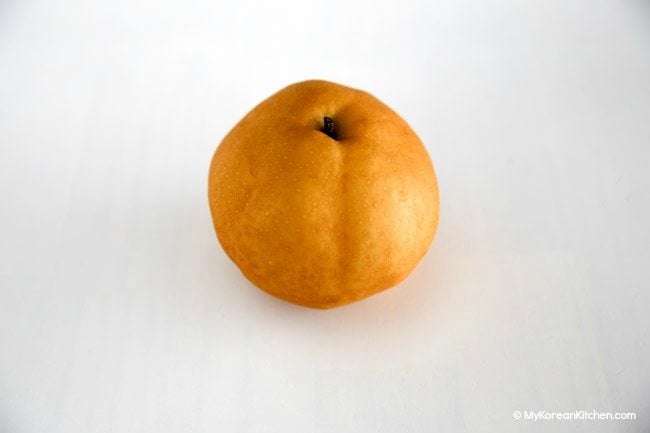Let’s explore what Korean pear is and how it can be used in Korean cooking!

What is Korean Pear
The picture above has a few different names it goes by; Korean pear (Bae, 배), Asian pear and Nashi pear.
Korean pear is my favourite type of pear in the world! The flesh is firm but marvellously juicy and sweet. It has a nice crunchy texture as well. Though its skin is a bit rougher and thicker, so you don’t eat the skin.
The only downside I can think of about this pear is that it comes with a pricey tag, even in Korea, and it’s not easily available in most parts of the world.
How to Use Korean Pear
One of the obvious ways to eat Korean pear is eating it as fruit. Just peel the skin with a vegetable peeler or a fruit knife and slice it to bite size pieces and enjoy.
However, it is often used in Korean cooking as well. Typically Koreans add the pear when they marinate meat (e.g. Bulgogi) because it makes the meat tender. Apparently the enzyme called ‘calpain’ does this part.
When it is not available (for making marinade), you can substitute it with kiwi or pineapple as well. But I prefer using pear as it’s less risky. Kiwi and pineapple can over tenderise if you use them too much or marinate with them for too long.
Another possible substitute is Bosc pear. It’s not as juicy and sweet as Korean pear, but it has some similarity.
You can also make some pear dessert or natural cough remedy with it.
Where to Buy
Korean pear is available at some Korean grocery stores and some greengrocers if in season. To make it easier for everyone, if any of you have seen it where you live, please let us know!
P.S. I just noticed that Amazon US sells them online! How convenient!


